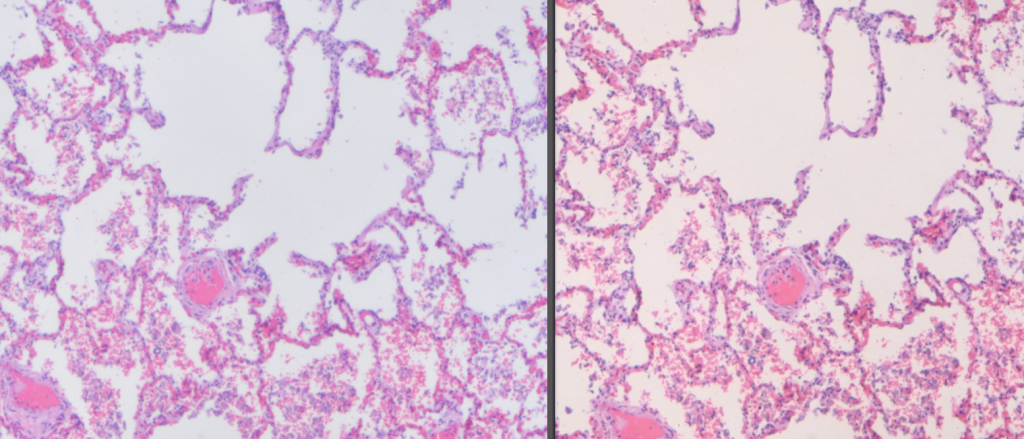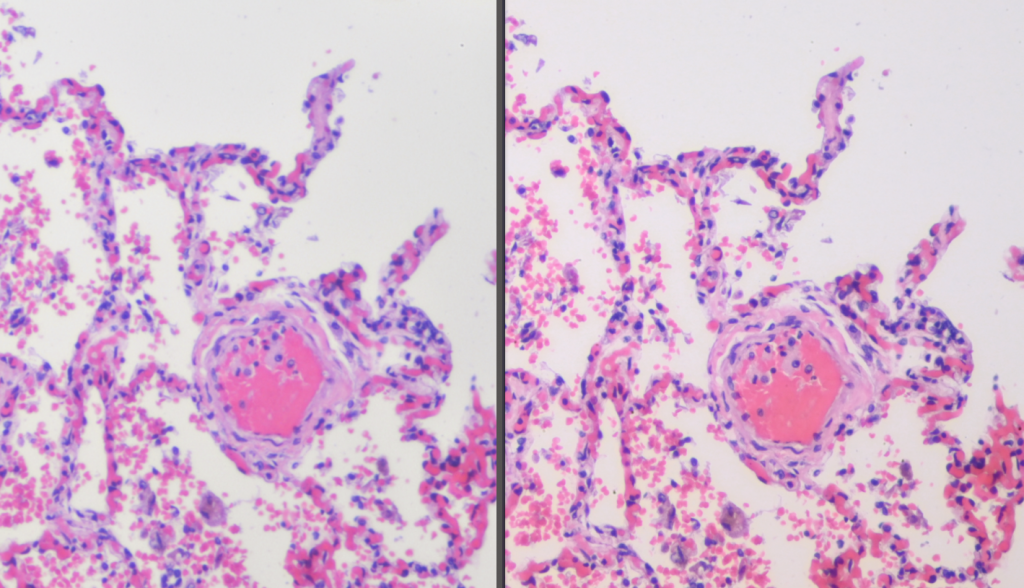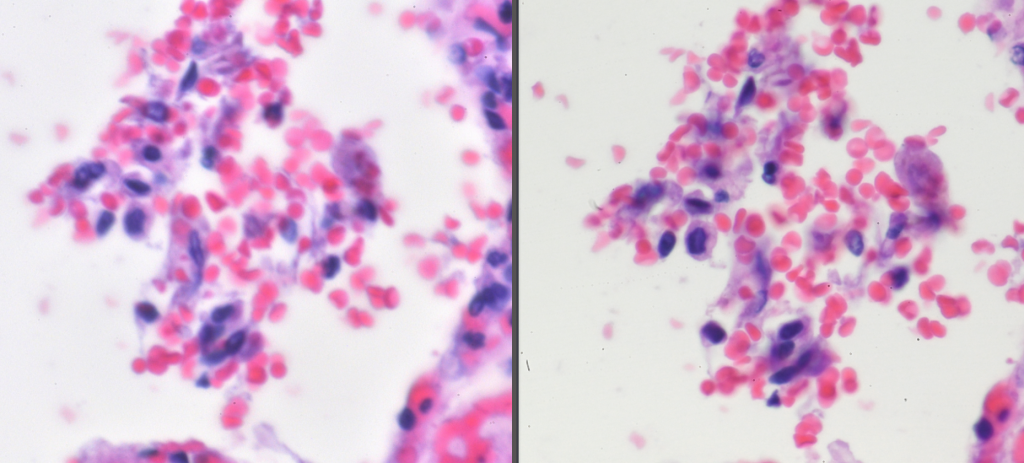For the first few years I did digital photomicrograpy, I used a Nikon D90. A couple of years ago, I bought a Nikon Z7. I thought it might be interesting to compare the results using the same slide. Note that the light tubes are different for the D90 and Z7, so the resulting magnification is a little different. Thus the fields are not *exactly* the same. Nonetheless, the difference is pretty obvious. Also, the D90 takes a nominal 12 MP image (4288×2848) while the Z7 takes a 40 MP image (8256 x 5504). These are pictures of a random lung field.
Here is low power. As you might expect, the field of view was much larger on the Z7. To compare the two, I put them both in a viewing app (Gwenview for linux), zoomed to the same region in both, and did a screen capture. it’s not a “real” image comparison with great metrics, but it gives you an idea of the visual difference. the D90 is on the left, the Z7 is on the right. You can click on the image to get a larger view.
Here’s a medium power. The difference is a little more apparent.
Here is high power, where the difference is most apparent:
There could be a lot of valid criticisms to this comparison. Some of this is almost certainly due to the light tubes the connect that cameras to the microscope. They have their own lenses and magnification. At high power, part of the difference may be to level of focus. And, of course, comparing appearance on a screen is not really comparing the images. Nonetheless, in terms of what I can accomplish with my setup, moving to a better camera made a huge difference, particularly at high power. In addition, of course, the Z7 provides NEF images, so I can play all sorts of games in creating the image. These are at default settings for creating jpegs.


